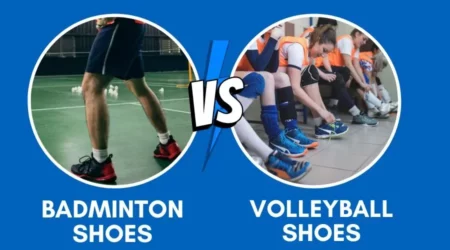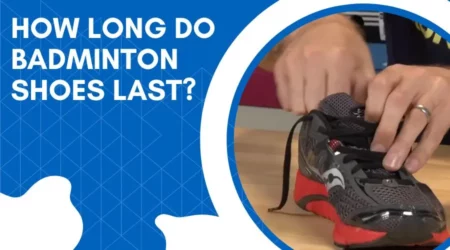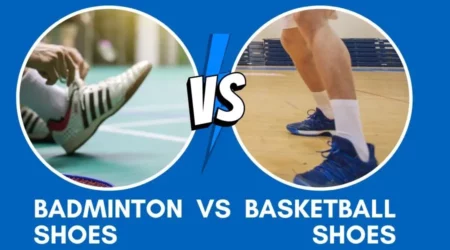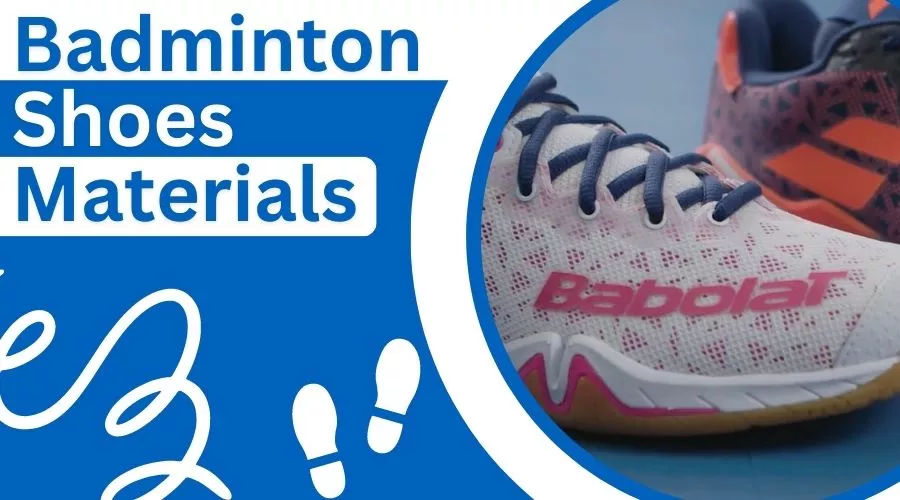
The materials used in the construction of badminton shoes play a crucial role in their fit, comfort, and performance on the court.
From the durable rubber outsole to the lightweight and breathable upper material, choices of a good badminton shoe can make a big difference in how it feels and performs during play.
I’ll delve into the various materials used in badminton shoes, exploring their unique properties and how they contribute to the shoe’s overall performance.
So, whether you’re an advanced badminton player looking for the perfect shoe or simply curious about the materials that go into making these specialized athletic shoes, read on for an in-depth look at the materials of badminton shoes.
Leather badminton shoes
Leather badminton shoes are athletic shoes with a leather upper. Leather is a flexible material that can be molded to the shape of the foot and is resistant to water and stains.
These shoes are known for their durability and are an excellent selection for advanced players who need long-lasting shoes.

Leather badminton shoes also offer support and stability, with a snug and perfect fitting
that helps to keep the foot in place during movement.
However, they may be less comfortable to wear for extended periods or in hot and humid conditions and may be more expensive than other badminton shoes.
While leather badminton shoes offer certain benefits, they may not be the right choice for everyone.
Players who prefer lightweight and breathable material shoes or are on a tight budget may want to consider other options.
Canvas badminton shoes

Canvas badminton shoes are a type of footwear specifically designed for playing the sport of badminton. They are usually made of a lightweight canvas material, which helps to keep the foot cool and comfortable during intense matches.
One of the key features of canvas badminton shoes is their soles. These soles are typically made of non-marking rubber so they won’t leave any marks on the court surface. This is important because it allows advanced players to move quickly and easily around the court without damaging it.
The soles of canvas badminton shoes are also designed to be very flexible, allowing for a more excellent range of movement and enough traction on the court.
Another vital aspect of canvas badminton shoes is their fit. These shoes are designed to be snug and secure but not so tight that they cause discomfort or restrict movement. It’s essential to find a new pair of canvas badminton shoes that fits well, as a good fit can help to improve performance and prevent injuries.
Overall, canvas badminton shoes are an excellent choice for players looking for a lightweight, comfortable, and flexible shoe that can help them perform at their best on the court.
Synthetic materials in badminton shoes
Synthetic materials are often used in the construction of badminton shoes due to their durability, lightweight, and flexibility. These characteristics make them well-suited for use in a badminton court’s fast-paced and dynamic environment.
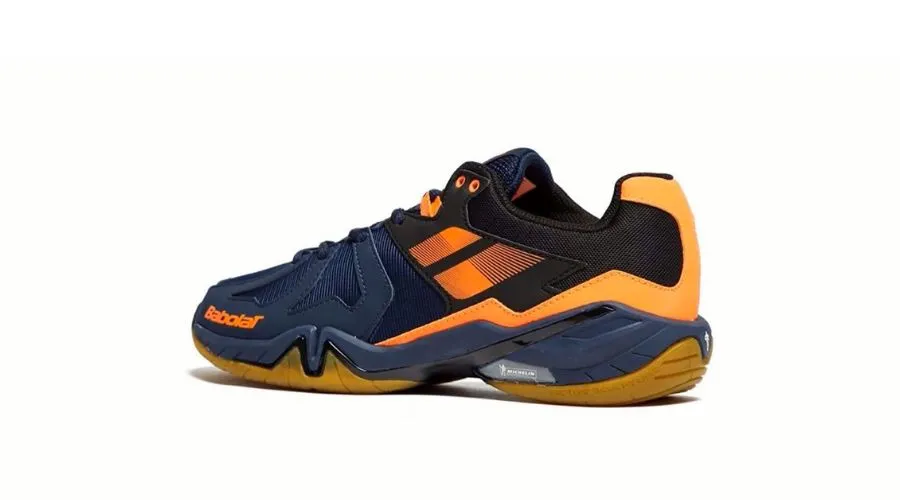
One common type of synthetic material used in badminton shoes is synthetic leather, an artificial material designed to mimic the look and feel of natural leather. Synthetic leather is generally more durable and easier to maintain than genuine leather. It is also often more breathable and moisture-wicking, which can be beneficial for keeping the feet cool and dry during play.
Another synthetic material often used in badminton shoes is foam, which can be found in the midsole and insole of the shoe. Foam materials can provide proper cushioning and support to help absorb shock and reduce the impact on the joints during play.
Some badminton shoes also use “power cushion” technology, a specialized type of foam designed to provide extra cushioning and energy return.
Synthetic materials can play a significant role in the performance and comfort of a badminton shoe. They can help to provide support, stability, and good cushioning, as well as improve the breathability and moisture-wicking capabilities of the shoe.
I recommend to used Synthetic materials shoes because these are ideal for the intermediate player.
Mesh materials in badminton shoes
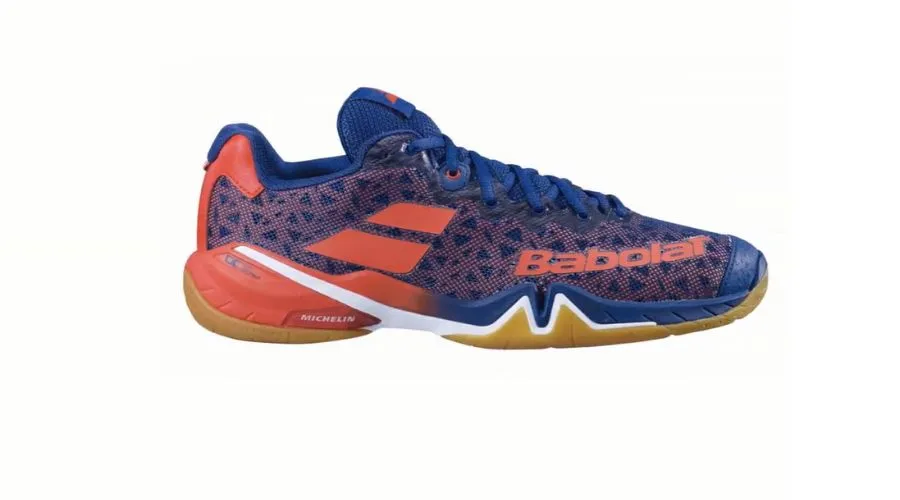
Mesh materials are commonly used in badminton shoes to enhance their breathability, which can be especially important for players looking for a more comfortable and cooling shoe.
Mesh is a type of synthetic fabric made up of small, interlocking holes, which allow air to circulate through the shoe and help keep the feet cool and dry.
It is generally lightweight and flexible, which can help improve the shoe’s overall comfort and performance.
Mesh can be used in different shoe parts, such as the upper, tongue, and insole, to provide ventilation and improve the shoe’s fit.
When picking a badminton shoe, it is essential to consider the upper material and the type of sole. Gum rubber, a variety of natural rubber, is often used for the outer sole of badminton shoes because it provides good traction on the court.
Yonex is a famous brand of badminton shoes that uses gum rubber soles. The midsole, which is the layer of the shoe between the upper and the outsole, can be made of foam or other materials to provide cushioning and support.
It is also essential to consider the non-marking shoe, especially if you play on indoor badminton courts. Non-marking shoes have soles that are designed to leave minimal marks on the floor, which is vital for maintaining the condition
Rubber outsoles for badminton shoes

Rubber outsoles are a popular preference for proper badminton shoes because they provide good traction on the court and help to improve stability during quick and sudden movements.
Gum rubber is a natural rubber often used for the outsoles of badminton shoes because it offers better grip and durability. Yonex is a well-known brand of badminton shoes that uses gum rubber soles.
When choosing badminton shoes, it is necessary to evaluate the fabric of the outsole, as well as the overall construction of the shoe.
Good badminton shoes should have a solid and stable outsole to support the lateral movements and quick changes of direction that are common in the game.
A shoe with a thin sole may offer a better feel and control but may not provide as much support and cushioning as a thicker sole.
It is also significant to consider the non-marking properties of the shoe, specifically if you will be playing on indoor courts.
When selecting a badminton shoe, it is a good idea to try a few different options to find the best fitting and most comfortable shoe for your foot type and playing style.
Impact of material choices on fit, comfort, and performance of badminton shoes
The material choices for badminton shoes can significantly impact fit, comfort, and performance.
The material of the shoe’s upper part can also affect the fit and support of the shoe, which can, in turn, affect the player’s performance.
It is vital to consider the shoe’s fit, comfort, and performance requirements when selecting materials, as the right material choices can help optimize the shoe’s performance and enjoyment.
Environmental considerations in material selection for badminton shoes
There are several ecological considerations to assess when picking materials for badminton shoes.
Generally, it is crucial to assess the environmental impact of the materials you choose when selecting badminton shoes, as this can help reduce the product’s overall environmental impact.
Potential developments in materials for badminton shoes
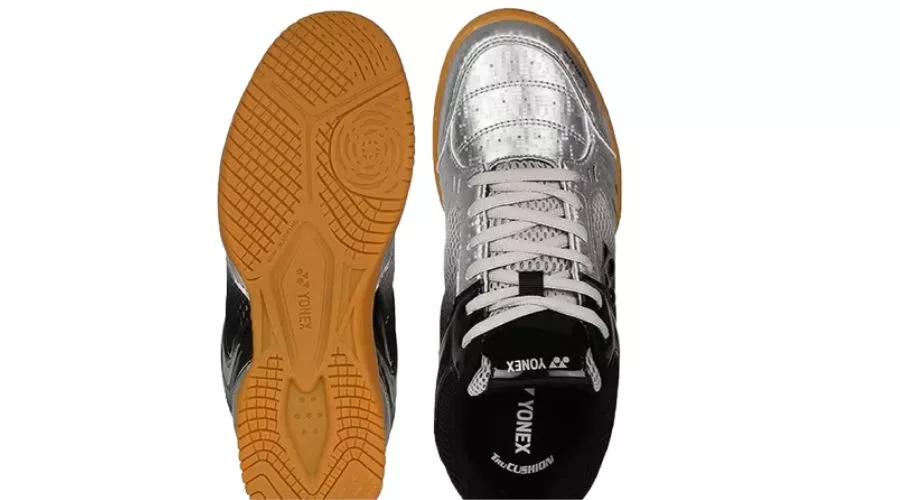
Lightweight and flexible materials: These types of materials can help reduce the shoe’s overall weight, making it easier for the player to move around the court.
They can also allow for a more excellent range of motion and help to improve the player’s agility.
Examples of lightweight and flexible materials used in badminton shoes include the mesh, synthetic leather, and certain types of foam.
Breathable and moisture-wicking materials: During intense play, the feet can get hot and sweaty, which can be uncomfortable and lead to blisters and other foot issues.
Materials designed to wick away moisture and allow for better airflow can help keep the feet dry and comfortable. Examples of such materials include mesh and certain types of synthetic fabric.
Supporting and stabilizing materials: Badminton shoes need to provide adequate support and stability to help prevent injuries, particularly to the ankles and knees.
This can be achieved through the use of materials such as foam or gel in the soles, as well as through the use of specialized support structures within the shoe.
The material used in a badminton shoe will depend on the specific needs and preferences of the player, as well as the type of play that the shoe is intended for (e.g., indoor or outdoor).
Different materials will offer additional benefits and trade-offs, so players need to consider their own needs and choose a shoe suitable for their play style.
FAQS
What kind of shoes should be used for badminton?
Badminton shoes are designed specifically for badminton and are the best choice for playing the game. They are lightweight and provide good grip, stability, and support for quick movements and lateral footwork in badminton. Some features to look for in a good pair of badminton shoes include a non-marking outsole, good traction, a flexible and responsive sole, and a comfortable and secure fit. Choosing a shoe that fits well and feels comfortable is essential, as you will be moving around a lot on the court and need to perform at your best.
Which sole is best for badminton?
The best sole for badminton shoes depends on the court surface, shock absorption, material, and personal preference. A thin, flexible sole may be more suitable for wood courts and a more agile feel, while a thicker, more stable sole may be better for concrete courts and better support. It’s important to try on different shoes and choose a pair that fits well and feels comfortable.



